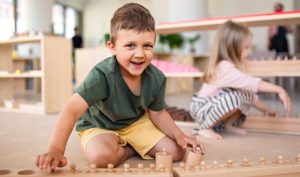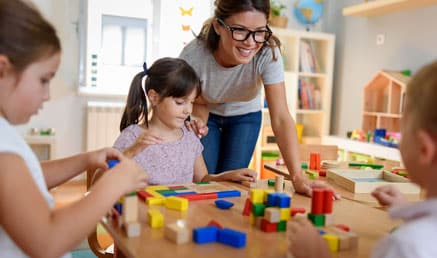
“It’s our polite nudge in the ribs to help you and your team stay organised and on task.”
This week’s subject is: Inclusive environment.
Element 3.2.1: Outdoor and indoor spaces are organised and adapted to support every child’s participation and to engage every child in quality experiences in both built and natural environments.
How does your service ensure that both indoor and outdoor physical environments remain inclusive for all children, and what processes do educators implement to assess and adapt these spaces to support every child’s participation?
Element 3.2.1 highlights the importance of creating inclusive environments that cater to the diverse needs, interests, preferences, and learning styles of all children. For service leaders and educators, fostering such an environment requires intentional design, ongoing reflection, and proactive adaptations to ensure every child can fully engage in play-based learning.
Inclusive environments are designed to remove barriers, promote engagement, and provide opportunities for all children to participate meaningfully. This involves considering physical access, sensory needs, cultural diversity, and developmental differences when planning indoor and outdoor spaces. Regular reflection and assessment are critical to identify areas for improvement and ensure the environment remains responsive to every child’s needs.
Together with your team, review the following strategies, and reasonable adaptations and reflect on what’s currently being implemented and consider what more can be done to foster and maintain inclusive spaces within your service:
-
- Regular audits of indoor and outdoor spaces to ensure they are accessible and engaging for all children. Conduct audits and utilise reflection tools to assess path/walkways, furniture placement, and resource accessibility. Involve families, specialists, and children in these audits to gain diverse and wholistic perspectives on inclusion. For example, consider whether a child using a wheelchair can navigate outdoor play areas or if sensory-friendly spaces are available for children who may become overwhelmed.
- Incorporate natural elements like plants, sand, or water features alongside built structures to create rich, sensory experiences. Natural environments can be particularly engaging for children with diverse needs, offering opportunities for exploration and calming sensory input. Ensure these areas are accessible, with smooth pathways or ramps where necessary.
- Ensure visual displays in the classroom and outdoors (e.g., labels, signs) are clear and accessible to children with varying levels of literacy and language skills.
- Select a wide variety of open-ended resources and materials that cater to varied interests and developmental stages. Open-ended materials, such as blocks, fabrics, or natural elements like sand and water, encourage creative exploration, flexible thinking and are adaptable to different abilities. Ensure these resources are sufficient in number to minimise waiting times and promote collaborative play.
- Select and arrange furniture and equipment to support diverse needs. Provide low tables for children with mobility challenges, create clear pathways to avoid obstacles, and ensure resources are within reach for all ages and abilities. Flexible setups allow children to choose how they engage, fostering independence and agency.
- Ensure environments are designed and set up with designated spaces for active play, quiet reflection, and small or large group activities. For example, provide shaded outdoor areas for children sensitive to sunlight and quiet indoor corners with soft furnishings for those needing sensory breaks. This balance supports children’s diverse emotional and physical needs.
- Design and set up the environment to reflect the cultural diversity of the service’s community. Display artwork, symbols, or resources that represent Aboriginal and Torres Strait Islander cultures and other cultural backgrounds of children attending the service, fostering a sense of belonging and inclusive relationships.
Reasonable adjustments are modifications made to the environment or practices to ensure children with additional needs can participate fully. These adjustments should be practical, individualised, and developed in collaboration with families and specialists:
-
- Physical adaptations can be made to the physical environment to support the inclusion of children with mobility and physical challenges, i.e. installation of ramps, handrails and adjusting the height/s of shelving or other storage areas to facilitate independent access to resources.
- Create sensory-friendly spaces with dimmable lighting, noise-reducing headphones, tactile resources, fidget toys, sensory walls with different textures, soft mats or weighted blankets etc. in quiet areas to provide comfort and support self-regulation.
- Incorporate visual schedules/routines or signage to assist children with communication difficulties or those who benefit from structured routines. These can assist in guiding transitions between indoor and outdoor spaces.
- Provide specialised adaptive equipment, such as supportive seating or communication aids, to facilitate participation (in collaboration with occupational therapists), to ensure equipment meets individual needs.
- Organise group experiences to accommodate different developmental stages, allowing children to engage at their own pace. I.e., pair children with similar interests, provide one-on-one support during group play or arrange an older support child/”buddy” to support younger children.
To ensure your service environment remains inclusive and supports the access and participation of all children attending your service, management and educators should engage in continual reflective practice:
-
- Are all children able to access and engage with both indoor and outdoor spaces?
- How do we incorporate feedback from families and specialists to improve our environment?
- How do we measure the success of the layout of the environment & do we regularly evaluate the effectiveness and inclusiveness of the physical environment?
- What barriers to participation exist, and how can we address them?
Document these reflections and goals in your Quality Improvement Plan (QIP) and share outcomes with staff and families to promote transparency and collaboration.
Resources:
Guide to the NQF- Standard 3.2: Use
The Environment as the Third Teacher
Amplify- Simple ways to promote inclusive play in any early learning environment: Sensory processing
Within System7 go to Quality Area 3/ Modules 6, 7 & 8 to submit self-assessment notes and if required, open a QIP issue if you identify any areas of improvement.
The Childcare Centre Desktop has a range of resources to assist services with inclusive environment. These include the Physical Environment Audit, Physical Environment and Parent Journey Procedure, Outdoor Environment and Playground Safety Audit Schedule, Physical Environment Policy, Inclusive Audit and much more.
Resources, NQS Element, Regulation and System7 links:
Childcare Centre Desktop – Childcare Centre Desktop
National Quality Standard – QA 3/ 3.2.1- Inclusive Environment
National Regulations – 73, 75, 76, 105, 109, 113, 157
System7 Module – QA3/ Modules 6, 7 & 8
If you have any questions, send us a note via the Contact page here!




